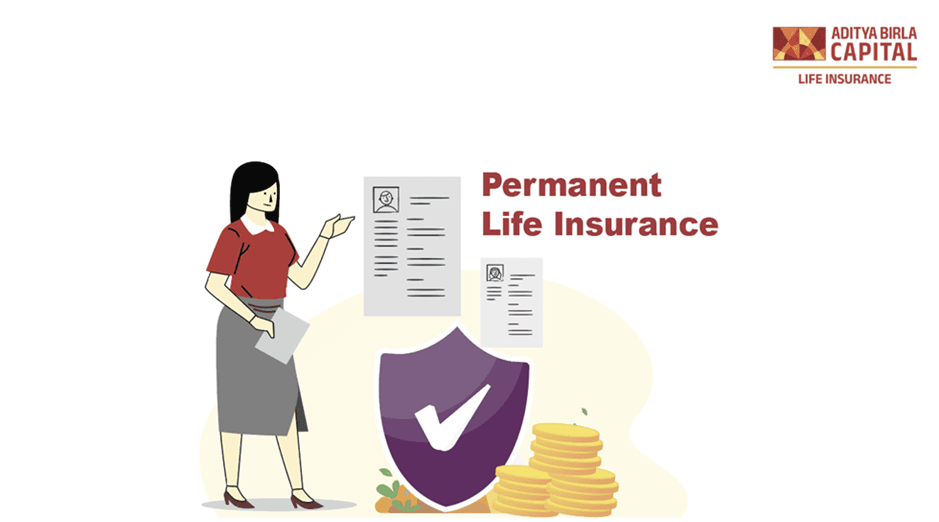Aditya Birla Sun Life Insurance Company Limited
Types of Bonuses Under Life Insurance Policy

Plan Smarter, Live Better!

Thank you for your details. We will reach out to you shortly.

Currently we are facing some issue. Please try after sometime.


- Table of Contents
Free goodies? Cashbacks on every purchase? Extra perks on the tickets you’ve bought? A bonus at work at the end of each year? Everyone loves a bit of extra stuff, right?
Similarly, life insurance plans also have something called bonuses. Insurance companies offer bonuses to you in addition to the policy benefits (death benefit/maturity benefit/survival benefit). It is crucial to note that all policies do not offer bonuses.
So, which types of life insurance policies offer bonuses? What are the various life insurance policy bonus types? How are they calculated? How often do you receive them?
Let’s discuss!
Types Of Bonuses In Life Insurance Plans
Life insurance plans generally offer these types of bonuses -
1️. Reversionary Bonus
This won’t be given to you immediately but instead gets accumulated under the policy. You or your nominee will receive it either when the policy matures or when then is claim during the policy period.
The reversionary bonus rate is calculated as a certain percentage of the sum assured. It is declared by the insurer.
Here is the formula:
Reversionary Bonus = Sum Assured x Reversionary Bonus Rate (declared by the insurance company) There are two types of Reversionary bonuses -
- Simple Reversionary Bonus
- Compound Reversionary Bonus
Let's discuss each of these bonuses in detail -
- Simple Reversionary Bonus
A Simple Reversionary Bonus can be calculated easily - as the name suggests. The reversionary bonus rate is calculated by multiplying the sum assured you choose when purchasing the policy by the reversionary bonus rate.
Example: Lekha has bought a participating endowment policy with a sum assured of Rs 25 lakhs. And, a simple reversionary bonus of 5% of the sum insured is available under the policy.
Sum Assured = Rs. 25,00,000
Reversionary Bonus Rate = 5%
Simple reversionary bonus = 5% of 25,00,000 = Rs. 1,25,000
Hence, Lekha will receive Rs. 1,25,000 every year with the maturity benefit or this amount shall be given to her nominee along with the death benefit.
- Compound Reversionary Bonus
Compound reversionary bonuses incorporate both the sum assured and the previous year's bonus into the reversionary bonus rate.
Let's revisit Lekha's example and assume a 5% compound reversionary bonus is paid under the policy.
| Year | Sum Assured (Rs) | Bonus (Rs) |
|---|---|---|
| 1st Year | 25,00,000 | 1,25,000 |
| 2nd Year | 26,25,000 | 1,31,250 |
| 3rd Year | 27,56,250 | 1,37,812.5 |
And so on. This cycle shall continue till the policy expires or in case you pass away during the policy period.
2️. Terminal Bonus
Terminal bonuses are also known as persistency bonuses. The bonus is payable to you when the policy matures or to your nominee if you, unexpectedly, pass away while the policy is still active.
The insurance company offers this bonus as a way of appreciating your timely premium payments. It is up to the insurer to decide whether or not to pay the bonus. This means that there is no assurance that you or your nominee will receive it.
3️. Interim Bonus
Bonuses are typically announced at the end of the financial year. However, an interim bonus is given to you in case the policy matures, or death happens between two consecutive bonus declaration dates. Based on the number of days remaining from the previous bonus date, this bonus is calculated. Insurers came up with this bonus to ensure that you or your nominee can enjoy the benefits entirely without missing out on anything.
Example: Suppose your whole life insurance policy expires on December 31, 2025. This means that you gained your last reversionary bonus in 2024-25. This interim bonus is based on the last nine months, i.e. April 1, 2030, through December 2025. The bonus accumulated during these 9 months will be paid to you.
4️. Cash Bonus
As opposed to other bonuses, this bonus is paid to you each year at the end of every financial year in the form of cash. The bonus is calculated as a percentage of your annual premium and is paid annually.
The formula for calculating it is as follows:
Cash Bonus = Annual Premium Amount x Cash Bonus Rate
Example: Dev buys a participating whole life policy with a sum assured of Rs. 30 lakhs. He needs to pay an annual premium of Rs. 20,000, and the cash bonus rate under his policy is 5%.
So, how much cash bonus does he receive every year? Let's see -
Annual Premium Amount = 20,000/-
Cash Bonus Rate = 5%
Cash Bonus = 5% of 20,000 = Rs 1000
Hence, Dev will receive a cash bonus of Rs 1000 every financial year.
It is important to note that the bonuses mentioned in this article are those that are most commonly offered. Life insurance plans may, however, offer other types of bonuses as well.
How Is Life Insurance Bonus Generated?
Life insurance companies issue policies in exchange of premium payments. The premiums collected by the insurers from every customer become a part of their assets.
Life insurance companies take your premium payments and use them to provide financial security when needed. However, since claims don't happen every day, they invest your money in different instruments, like bonds and stocks. The profits from these investments are given back to you as bonuses, adding extra value to your policy.
Which Policies Are Eligible For Bonuses?
Not all policyholders can enjoy bonuses, as eligibility varies based on the type of policy they hold. A few life insurance plans, such as endowment or money-back plans, fall into two categories - participatory plans and non-participatory plans.
Typically, participating life insurance policies are eligible for bonuses. These policies allow policyholders to share in the profits of the insurance company through bonuses or dividends. The specific eligibility for bonuses can vary depending on the terms and conditions of the policy and the performance of the insurance company's investments.
It's essential to review your policy documents or consult with your insurance provider for precise details regarding bonus eligibility.
How Are Bonuses Calculated Under Life Insurance?
Insurance companies gather premiums from policyholders like you to establish a fund for fulfilling beneficiaries' claims. They mainly make profits by investing these premiums in financial instruments and then reinvesting the generated profits. Each year, they conduct a detailed assessment of investment returns and insurance liabilities to get a full picture of their financial status.
When setting the bonus rate, insurers consider various factors, such as how well the assets are performing, past bonus rates, claims history, and the current state of the financial markets. Only policies that participate or have profits tied to them are eligible for this bonus.
There are two common ways to calculate life insurance bonuses -
-
Percentage Of The Sum Assured
In this method, the bonus is calculated as a percentage of the sum assured. For instance, if your policy's sum assured is Rs. 20 lakhs and the bonus rate is 2%, you would receive a benefit of Rs. 40,000.
-
Certain Amount Per Rs. 1000 Of The Sum Assured
Alternatively, bonuses can be determined based on a certain amount per Rs. 1000 of the sum assured. For example, if your policy has a sum assured of Rs. 20 lakhs and the bonus rate is Rs. 20 for every Rs. 1000 of the sum assured, your bonus amount would be Rs. 40,000.
Wrapping Up!
Life insurance bonuses are like additional perks that come with your policy, making it even more valuable. These bonuses, like reversionary bonuses that accumulate over time, terminal bonuses for loyalty, interim bonuses for timely benefits, and cash bonuses that directly reward you, add a special touch to your insurance experience. While not every policy offers these bonuses, and their calculation depends on factors like investment performance, policy type, etc., they undeniably enhance the overall appeal and benefits of life insurance.
Thank you for your details. We will reach out shortly.
Thanks for reaching out. Currently we are facing some issue.
Buy ₹1 Crore Term Insurance at Just ₹465/month*
ABSLI Super Term Plan
Term plan designed for salaried individual.
3 Plan Options
Health Management Service Worth ₹46000
100% return of premium
Life Cover
₹1 crore
Premium:
₹465/month*
Most Popular Calculator
Buy ₹1 Crore Term Insurance at just @ ₹576/month*
³ Provided all due premiums are paid.
ADV/1/22-23/2729







